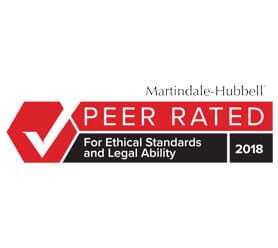



Prior to 1987, while serving on the Federal Indigent Criminal Defense Panel in the United States District Court for the Central District of California in Los Angeles, California, every Monday morning was “Arraignment Day.” Joe Shemaria was one of 36 elite criminal defense lawyers selected to serve on the panel of the largest federal district court in the United States. Each Monday morning was interesting as all defendants anxiously awaited what judge would be drawn at random out of the hopper by the designated clerk. There were no United States Sentencing Guidelines and it was truly a situation of “luck of the draw.” Two persons of the same age, same background, same criminal history and charged with the same identical federal offense (including the exact quantity and quality of any given controlled substance) sitting in the court room together could have vastly different paths that their future would take depending solely upon what United States District Judge they were assigned to that morning. For example, there were two judges just across the hall from one another (both Harvard law school graduates appointed to United States District Judgeships). Without giving a specific name, one was extremely liberal when it came to drug crimes and one was absolutely “death warmed over” for the identical drug trafficking offense. The knowledgeable, experienced federal criminal defense lawyers at that time would advise their clients, which judge to hope for if they wanted to continue being with their family and which judge would be the end of the line for them. These attorneys were not brash, stupid or uninformed. They all knew which judges believed the object of the criminal law was punishment (the “hanging judges”) and which judges were more enlightened and believed in giving a person a second chance at rehabilitation. So while one person who drew one of the “hanging judges” would, in all probability, get a long prison term if and when found guilty, the other person in our little hypothetical, would probably get either some type of home detention, probation or other much more lenient sentence if and when found guilty.
The United States Sentencing Guidelines (“USSG”) was meant to close this great disparity, dependent solely upon what Judge you happen to be lucky enough to draw. From the time they went into effect in 1987 until 2005, all United States District Court Judges were required by law to impose a sentence indicated in the Sentencing Table of the USSG. That, of course, changed in January, 2005 when the United States Supreme Court made the guidelines advisory only, rather than binding. The Guidelines provide for “very precise calibration of sentences” depending upon a number of factors. These factors relate both to the subjective guilt of the defendant and to the harm caused by the defendant’s acts.
Even though the Guidelines are not mandatory, most of the federal sitting judges today have been sitting less than 26 years and have come to rely upon the USSG as being the only thing they know about what a sentence should be. Even now, the United States Supreme Court requires every District Court judge to consider the Guidelines when determining a criminal defendant’s sentence, but is then directed to make an independent decision based upon the several factors listed in 18 USC section 3553 (a). The guidelines are now only considered as one of the “3553(a) factors.” When a judge determines within his or her discretion to depart from the Guidelines, the judge must explain what factors warranted the increased or decreased sentence. Should there be an appeal and sentencing is an issue on the appeal, a federal Court of Appeals reviews the sentence imposed through a proper application of the Guidelines and the 3553(a) factors to determine whether the sentence was reasonable for an abuse of discretion. So, even though the guidelines are not mandatory, a federal judge never wants to be reversed by an appellate court and a “Guidelines sentence” is always the safest way to go if, in an unfortunate situation, possible reversal on appeal is the only thing on the judge’s mind.
Many great articles (and even some books) have been written on the Guidelines and the Internet is filled with great content on the guidelines as well. Trying to navigate your own way through the extremely complicated Guidelines is foolhardy and only an experienced federal criminal defense lawyer like Joe Shemaria can analyze the unique facts of your case under the Guidelines and the all-important 3553(a) factors. Because over 90% of federally indicted defendants plead guilty, since 1987 a large part of every federal criminal defense attorney’s time is spent either negotiating the best plea agreement possible (prior to an arrest, indictment and/or trial, when the hopes of winning, or even hanging the jury at trial, appear hopeless).
Call 310-278-2660 Today For The Tough Defense You Need





9171 Wilshire Blvd
Suite 500
Beverly Hills, CA 90210
Beverly Hills Law Office Map